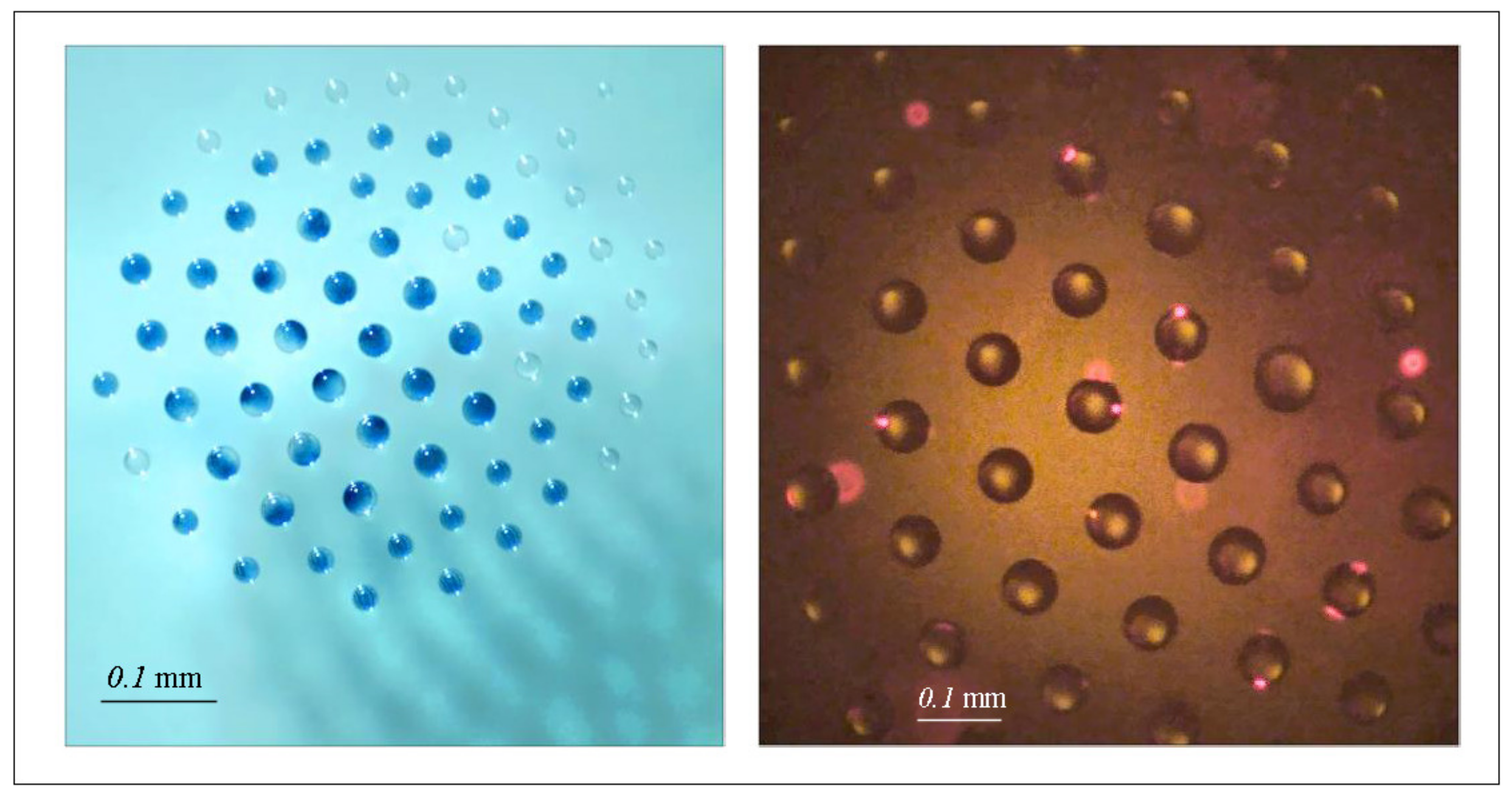News about the study of the droplet cluster
1. The Ring Cluster is a new type of droplet clusters, and is reported in our new paper:
A A Fedorets, D Shcherbakov, L A Dombrovsky, E Bormashenko, M Nosonovsky 2020 “Impact of surfactants on the formation and properties of droplet clusters” Langmuir https://doi.org/10.1021/acs.langmuir.0c02241

2. Evaporation of microdroplet capable to bear viruses and applicability of the droplet cluster to their study is reported in another new paper:
L A Dombrovsky, A A Fedorets, V Yu Levashov, A P Kryukov, E Bormashenko, M Nosonovsky 2020 “Modeling Evaporation of Water Droplets as Applied to Survival of Airborne Viruses” Atmosphere 11 (9), 965

3. A Russian news agency wrote about our research:
ENGLISH “Unusual Behaviour of Water to Help Study Virus Spread Mechanism”
“Bacteria and viruses spread over long distances by aerosols. However, it’s impossible to focus a microscope on an aerosol droplet to find out how these “travelling” microorganisms behave, while a droplet cluster allows you to study them,” Michael Nosonovsky, a senior researcher at the Microhydrodynamic Technologies Laboratory and professor at the University of Wisconsin, said.
“We observed shapes, atypical and “forbidden” for colloidal crystals: square, pentagonal and heptagonal. Moreover, if you add one more droplet to the cluster, its entire structure will change. It’s much more convenient to work with such small clusters in individual tasks: there are fewer drops, and it’s easier to track them,” Nosonovsky explained.
RUSSIAN “Необычное поведение воды поможет понять особенности SARS-CoV-2”
ITALIAN “Un comportamento insolito dell’acqua aiuterà a studiare il meccanismo di diffusione dei virus”
SERBIAN “Руски научници: Микрокапљице воде помажу у истраживању вируса”
Independently, our research was also mentioned in a Russian newspaper “Наука в Сибири” (“Science in Siberia”), No 31 from August 13, 2020 (www.sbras.info).